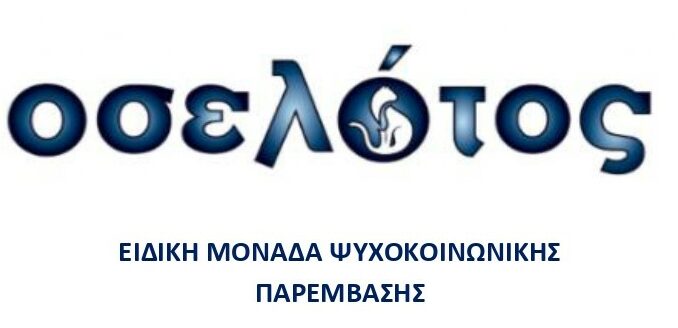The Ocelot, according to the encyclopedia, is a small carnivorous feline.
It belongs to the so-called wildcats of the American continent. It is about the size of a domestic cat, and has the most elegant, soft fur with beautiful color combinations, which cost it dearly because it was ruthlessly hunted for it. Ocelots, however, are occasionally bred as pets. The most famous Ocelot was Babou, Salvador Dali’s pet who he always had with him and often took with him on his travels.
The choice of the Ocelot for the name of this special Mental Health Unit is not accidental. It reflects the way in which its founders wanted to re-introduce us to teenagers and young people who are confronted with the law: Small and beautiful wild animals living in a real jungle, exposed to all kinds of dangers, ready not only to defend themselves but also to attack. And yet, wild animals that can be domesticated. The young people who arrive at Oselotos are “fierce.” In one way or another they have attacked and harmed, seemingly unprovoked, and their behavior has often led to their punishment, rejection and expulsion. The very characterization of the “delinquency” implies the existence of a structural temperamental characteristic which leads directly to the manifestation of problematic behavior.
All the members of Oselotos’s Interdisciplinary Team aspire to see for themselves, and to help others see beyond the judgements. They try to discern the “jungle” in which these individuals grew up and to recognize the threats that make them attack, whether they are intrapsychic, such as delinquent-related disease entities, or environmental, such as psychosocial factors concerning the family and the community in which the young person grows up. This is done always with the ultimate goal, to “tame” the wild and give them the choice if they want to be able to relate to others.
When talking about “familiarization”, many of us will inevitably think of one of the most famous passages in world literature, the day of the fox by the Little Prince of Saint-Exupéry, where the fox himself describes some very basic healing principles:
You have to have a lot of patience (…). I will look at you out of the corner of my eye and you will not say anything (…). But, every day, you will be able to sit a little closer (…). It would be better to always come at the same time (…). If you ever come to ‘yes, I will never know what time to put her goodness in my heart… It all takes some ceremony
Little Prince, Saint-Exupéry
Starting from this starting point, equipped with knowledge about ocelots and a lot of patience, we stand against them, trying not to forget that what we are called to implement here is not a “classic” psychotherapeutic process, but an alternative, non-violent “domestication” which very often requires us to put aside our “urban” luxuries, the armor of our theoretical directions and enter the jungle, in order to be able to approach. We go out behind our offices, crumple and break uniforms as well as treatment protocols whenever needed. We go close to the ocelots, both symbolically and literally. We visit schools, coaches, we become coaches and mentors ourselves. Many of us have a hard time at first. Getting off the path you are used to can be scary, perhaps even dangerous. But it is the first, necessary step for the “familiarization”. What does it mean to familiarize? asked the Little Prince. It is something that has been neglected a lot, said the fox. It means “to create connections…”
